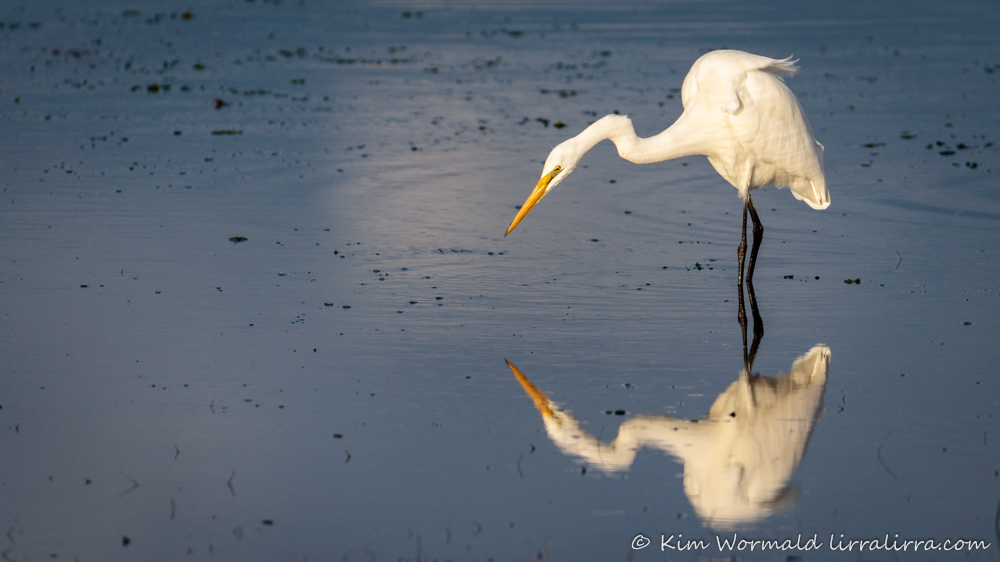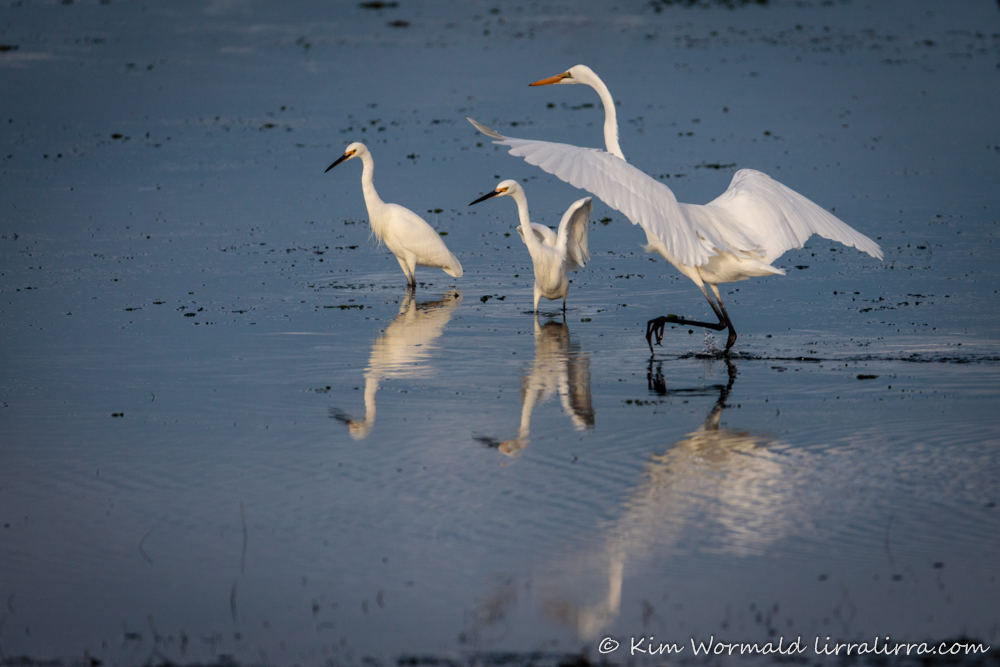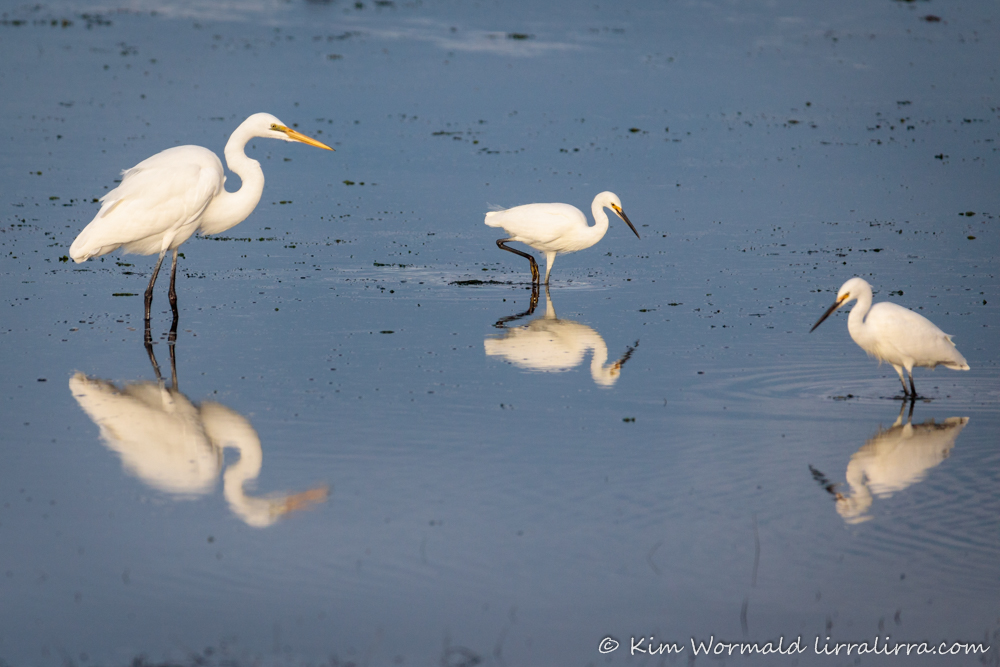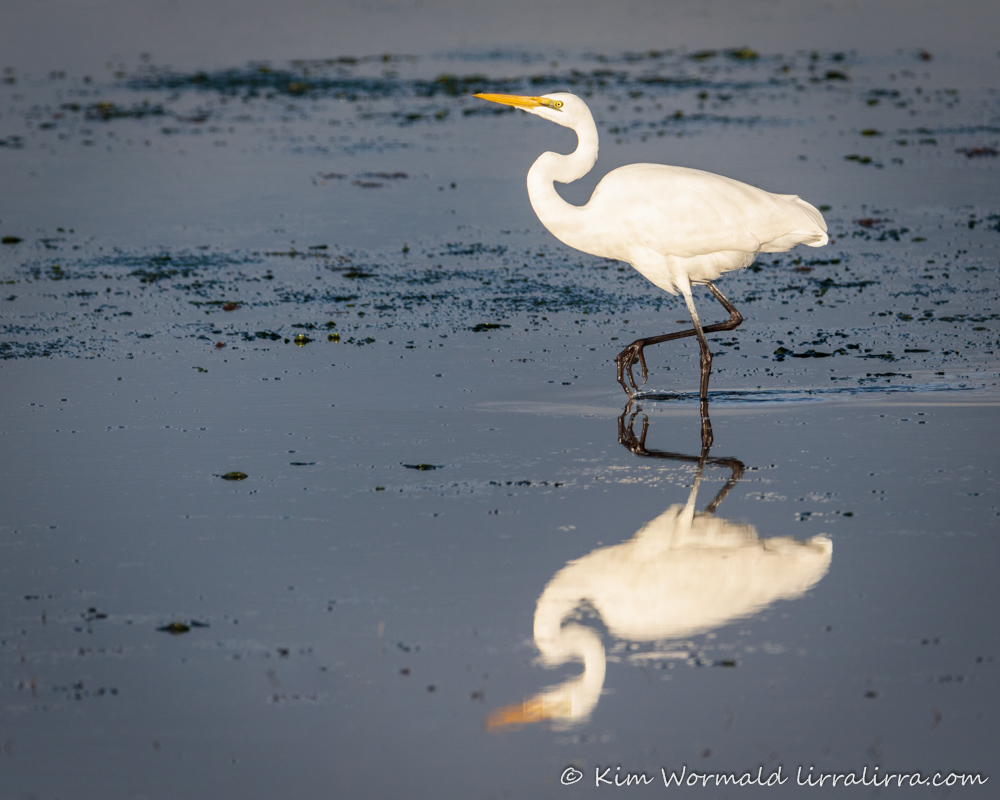At the WTP poo paddocks the other day the sun was setting and the light disappearing behind bands of cloud on the horizon when two Little Egret flew by and settled beside a Great Egret in the shallow waters of the bay.
Great Egret (Ardea alba) – formerly called Eastern Great Egret
1/2500, f/6.3, ISO 800
Great Egrets are the largest of the five egrets that can be seen around Australia, and it’s the species I see most often. It reaches up to about 90cm and can weigh more than a kilogram. In the field, or the puddle, it can be confused with Intermediate Egrets but it’s significantly larger, its gape extends beyond its eye (the fine line can just be seen in the image above) and it has a kinky neck which can be seen more clearly in the image at the end of this post.
The fine lines across the egret’s feathers are the reflection of the ripples.
Little Egret (Egretta garzetta)
1/2000, f/6.3, ISO 1600
I rarely see Little Egret so it was exciting to watch them foraging in the shallows. They are the smallest of the egret species, reaching about 60cm and weighing between 250-390g. I think they are stunning birds with their dark bills, legs and feet contrasting with their white plumage and the splash of yellow facial skin and iris.
Little Egret (Egretta garzetta), Great Egret (Ardea alba)
1/2500, f/6.3, ISO 800
The two species foraged together but a few times the Great Egret attempted to drive the Littles away; they’d run away at the last minute but didn’t go far. The image above shows the size difference between the species.
Little Egret (Egretta garzetta), Great Egret (Ardea alba)
1/2500, f/6.3, ISO 800
I wish I’d been closer to these birds, and down at the water’s edge rather than higher on the bank but it was a privilege to watch them feeding and interacting.
Great Egret (Ardea alba)
1/2000, f/6.3, ISO 400
Egrets often stand still when watching for food before striking like lightening. I set the camera to fast shutter speeds but needed to keep altering the ISO as the sun played peek-a-boo through the clouds.
Happy birding
Kim
Golden-headed Cisticola – many thanks for everyone’s comments here and on facebook about last week’s cisticola image, you all made me glad that I didn’t hit the delete button.
~ thank you for visiting and commenting
~ if you would like to join subscribers receiving a weekly email when lirralirra is updated, please use the ‘subscribe’ box above right






Great photos Kim, I too love the reflections, perfect shots
Thank you Dona, I’m glad you enjoyed them. Reflections are so peaceful somehow
Superb images and story-line, Kim. I too don’t see Little Egrets nearly as often as Great Egrets, but when I go north for holidays at Laurieton, NSW, Little Egrets are in abundance on the lake systems there. The sun playing peek-a-boo must have been challenging. These birds are so dazzling white in direct sun that I thought your evening shots were at the best time for muted light to prevent over-exposure, but it sounds like it was even more of a problem for you. Great work with these shots.
That’s a good point re muted light, if only the clouds hadn’t been so variable. I’ll have to look up Laurieton, it sounds like a place I’d enjoy visiting
Absolutely stunning images. Love the reflections.
The shoo-away shot looks like a perfectly choreographed ballet.
Egret Lake…
What a beaut image you’ve put in my mind; there must be some film footage out there somewhere that some clever composer has put to music
Lots of beautiful images and wonderful reflections 🙂
My favourite has to be the great egret trying to shoo away the littlies!
It was fascinating to watch the behaviour, especially because the littles were relatively unfazed by it
Beautiful images of the Egrets Kim.
Thank you Kath 🙂